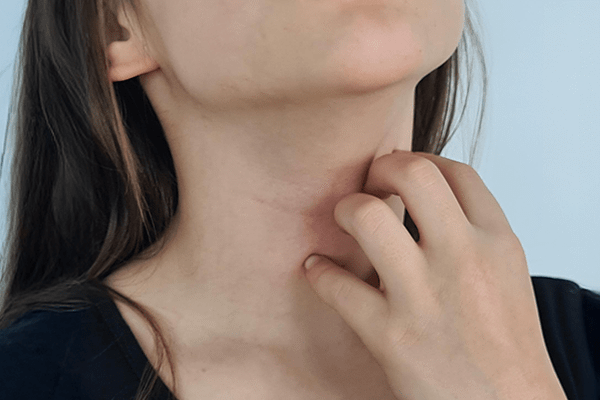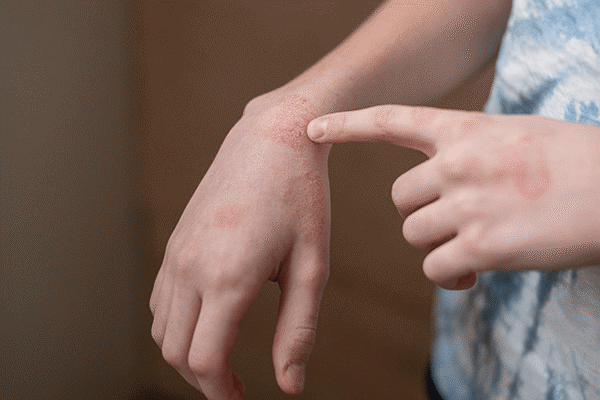Updated on March 21, 2023
Introduction
Lupus is an autoimmune condition mainly affecting the joints, kidneys, heart, lungs, and brain cells. It is a stubborn condition that is difficult to diagnose as its symptoms often mimic those of other medical conditions. As per the Lupus Foundation of America, approximately 1.5 million people are affected by Lupus in the US with 5 million affected worldwide. It is more commonly seen in women of childbearing age. The discoid lupus rash is more prevalent or common on the scalp, and face but may also develop on other parts of the body.
This blog will be focused on discussing discoid lupus rash, early stage discoid lupus rash, and discoid lupuas erythematosus.
What Is Discoid Lupus Erythematosus?
It is a type of cutaneous lupus that predominantly affects the skin only. As the name suggests, discoid refers to a circular or disc-like shape. It typically develops on the scalp and face but can also appear on other parts of the body such as ears.
What Do The Discoid Lupus Erythematosus Lesions Look Like?
The lesions of Discoid Lupus Erythematosus are red, thick, and scaly. These lesions may sometimes lead to scarring and skin discoloration. One long-term complication of Discoid Lupus Erythematosus is that if it develops on the scalp, the hair may never regrow in that area.
What Goes Wrong?
Causes of Discoid Lupus Erythematosus:
Our immune system is a complex network consisting of tissues, organs, and cells. Its major function is to defend the body by warding off viruses, bacteria, fungi, and toxins. Normally, the immune system produces antibodies to either neutralize or send a signal to other cells to eliminate it. However, in the case of autoimmune diseases, the autoimmune system begins to work against the body and it is unable to differentiate between healthy and unwanted substances.
The reason why the immune system works against the body is still unknown. However, researchers believe that it may be due to cell death. The body renews its cells and removes or washes out the dead cells. In cases like Discoid Lupus Erythematosus, the body fails to remove the dead cells which pile up and lead to the production of autoantibodies, causing symptoms of Discoid Lupus Erythematosus.
Early Stage Discoid Lupus Rash:
A lupus rash starts with a butterfly-shaped rash that covers the nose and cheeks. Slowly and gradually, the lesions spread and leave the skin discolored. The discoid or coin-shaped lesion is the distinct feature of early stage discoid lupus rash.
How Does Discoid Lupus Erythematosus Present?
Symptoms of Discoid Lupus Erythematosus differ from person to person. It is different in males and females. Some of the prominent symptoms in males and females include:
Males: It is generally believed that males do not develop Discoid Lupus Erythematosus, however, this is not true. Males do develop the symptoms of Discoid Lupus Erythematosus less commonly but with increased severity. The symptoms include:
- Weight loss
- Cardiovascular complications
- Low blood count
- Kidney problems
- Chest infections
Females: Symptoms of Discoid Lupus Erythematosus in females are less severe than in males and could present as:
- Hair loss
- Sensitivity to sunlight
- Mouth ulcers
- Arthritis
- Malar rash
How Does Discoid Lupus Erythematosus Affect Other Parts Of The Body?
Discoid Lupus Erythematosus affects some of the major organs of the body including:
- Heart: If the inflammation spreads, it may damage the lining of the heart, and the membrane that surrounds it, the pericardium, causing pericarditis.
- Kidneys: Discoid Lupus Erythematosus may cause lupus nephritis in which the kidneys are damaged and are unable to work properly, causing symptoms like frequent urination, high blood pressure, and swollen legs, feet, and face.
- Central Nervous System (CNS): The symptoms of lupus affecting the CNS include brain fog, headaches, seizures, and strokes.
- Lungs: Lupus affecting the lungs may cause symptoms such as difficulty breathing, and inflammation of the lining of the lungs.
- Blood: Lupus can cause alterations in the blood cells, causing anemia, leukopenia, and thrombocytopenia.
How Is Discoid Lupus Erythematosus Diagnosed?
The American College of Rheumatology has a set standard classification to confirm the diagnosis of Discoid Lupus rash. If a person meets 4 out of 11 criteria, the doctor will confirm a lupus diagnosis. The criteria include:
- Malar Rash
- Discoid Rash
- Photosensitivity
- Oral or Nose Ulcers
- Nonerosive Arthritis
- Pericarditis or Pleuritis
- Kidney Disorder
- neurologic Disorder
- Hematologic Disorder
- Immunologic Disorder
- Positive ANA (Antinuclear Antibodies)
Also read: Lupus rash vs Rosacea
Other tests include:
- Antinuclear antibody
- APLs
- Anti-DNA Antibody test
- Anti-Smith Antibody
- Antihistones antibodies
- Non-specific tests
- Urine tests
- Tissue biopsies
- Imaging testing
How To Cope With Discoid Lupus Erythematosus?
- Regular exercise: enhances mood and releases endorphins that help in reducing anxiety and sensitivity to pain.
- Progress journal: helps you keep a track of your activities and thoughts. This can help you overcome negativity. When a person is sick, it is only natural for them to feel sad and depressed. In such cases, journaling really helps.
- Setting goals: for anything and everything helps to keep one motivated. Taking small steps and increasing your stamina day by day can keep your mind in the right direction.
- Healthy diet: is known to help greatly. There is no specific or definite diet for lupus, however, it is essential to eat a balanced diet to reduce the aggravation of lupus symptoms.
- Limit sun exposure: This can help immensely as photosensitivity is a common symptom of Discoid Lupus Erythematosus. It causes rashes, fatigue, joint pain, fever, etc. Therefore, it is essential to reduce sun exposure.
- Rest: can help those with a diagnosis of Lupus. Restlessness may lead to increased inflammation resulting in aggravation of Lupus symptoms including discoid lupus rash.
A Word From Revival:
Many symptoms of lupus can manifest in various ways in different persons. While some people may go through cycles of flare-ups and remissions, others may endure persistent symptoms of discoid lupus rash. Lupus symptoms vary widely, which can make diagnosis difficult for medical professionals.
A person can manage their symptoms, prevent organ damage, and have a higher quality of life with a number of treatments when a doctor has identified the illness.








